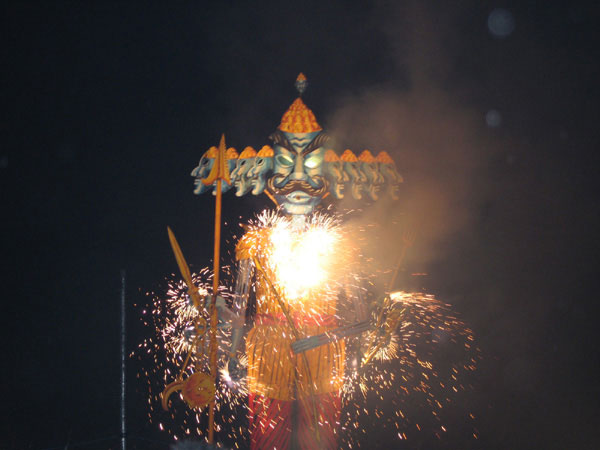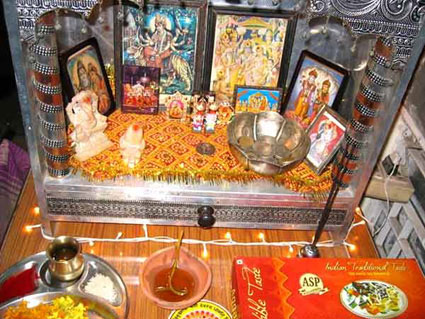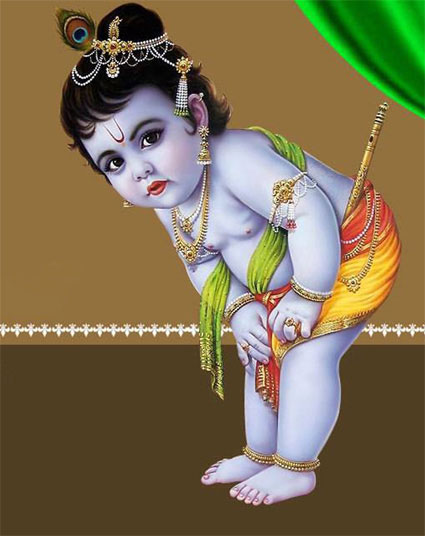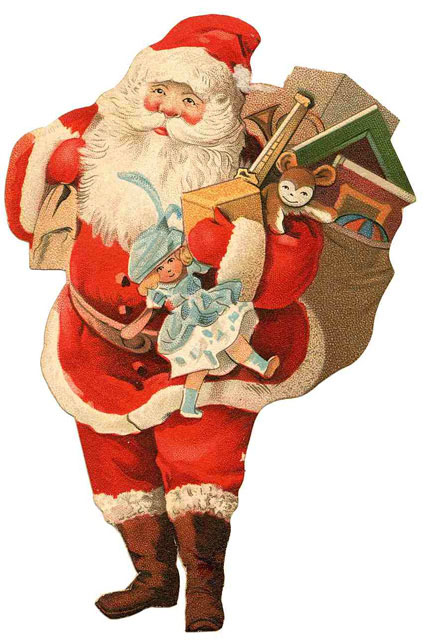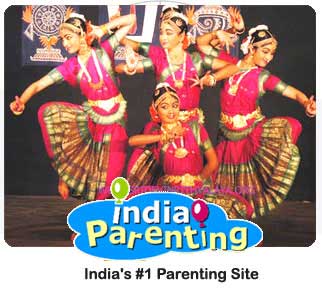Vijaya Dashami literally means the celebration of righteousness over evil which is celebrated on the tenth day of the Hindu lunar month of Ashwin. Find out about the origin of the festival and its celebration in India.The tenth day of the Hindu lunar month of Ashwin is celebrated as Vijaya Dashami or Dussehra. It marks the end of the Maha Navratri or the nine days of Durga Puja. The day is basically the celebration of the victory of the Mother Goddess over evil demons named Shumbh and Nishumbh. So it is a celebration of righteousness over evil and according to legends the day is marked by several other such victories of good and other factors. Hindus celebrate this festival worldwide by observing social gatherings and offering sweets and gifts to relatives, friends and neighbours. The festivity also marks the beginning of the harvest season and prayers are said and rituals are observed to invoke blessings from Mother Earth for a good harvest, peace and prosperity to all. In this articleThe Origin of the FestivalThe Culmination of Navaratri The Victory of Lord Ram End of Exile of the Pandavas Vijaya Dashami (Dussehra) CelebrationsDussehra Celebrations In Eastern India and Bengal The Origin of the Festival Mythological legends refer to a number of stories related to Vijaya Dashami, let us have a look at some of them. The Culmination of Navaratri - According to this story, Shakti or Parvati the wife of Shiva defeats and kills the demon called Mahishasura after a nine-day long battle. According to the Skanda Purana, this is the victory of the Mother Goddess who acquires power and energy to defeat and vanquish all evil from the face of the earth and protect her progenies from every misery. The Victory of Lord Ram - Vajayadashami also celebrates the victory of Lord Ram over Ravana as cited in the epic Ramayana. This is when Lord Ram rescues his wife Sita who was abducted by Ravana and imprisoned in Lanka. Effigies of Ravana are burnt to mark the victory of good over evil. This marks the celebration of Dussehra all over India. End of Exile of the Pandavas - According to Mahabharata, Vijaya Dashami also marks the end of “Agyatvas” or exile in disguise for the Pandavas. They were to spend twelve years in exile and the thirteenth year in disguise after the elder Pandave, the defeat of Yudhisthir in the game of dice with his Kaurava cousin, Duryodhana. On this day, the Pandavas completed their thirteen years of exile and came about to claim their rightful kingdoms. Vijaya Dashami (Dussehra) Celebrations In northern India, it is a ritual to plant barley seeds in earthen pots on the first day of Ashwin month or the beginning on the Navaratri. On the tenth day, these sprouts are taken out and used and planted as symbols of luck, they are called “Noratrats” due to their nine-night old age. In the southern part of India Vijaya Dashami is celebrated with the worship of Chamundeshwari or Durga. Colourful toys of gods and goddesses are built and exhibited to mark the celebration which is known as “Golu” in Tamil Nadu and “Bombe Habba” in Karnataka. In Kerala, Goddess Saraswati, the goddess of knowledge is worshipped on the day of Vijaya Dashami and young children are introduced to education on this auspicious day. Dussehra Celebrations In Eastern India and Bengal - Vijaya Dashami marks the culmination of the five days of Durga Puja. The idol of the mother goddess is worshipped for five days and on this day, Durga is believed to leave for her husband, Shiva’s abode in the Himalayas. The idol is immersed in the Ganges on this day and the festivities of greeting each other and distributing sweets begin. The young seek the blessings of the elders on this occasion. In fact, the principal motif of Vijaya Dashami is to mark the victory of good over evil and promote social bonding. Apart from the Hindus, people from all religions become a part of the festivities as sweets are distributed to one and all and gifts are exchanged. People pray for peace and prosperity and celebrate the commencement of a fruitful harvest season.
Vijaya Dashami literally means the celebration of righteousness over evil which is celebrated on the tenth day of the Hindu lunar month of Ashwin. Find out about the origin of the festival and its celebration in India.The tenth day of the Hindu lunar month of Ashwin is celebrated as Vijaya Dashami or Dussehra. It marks the end of the Maha Navratri or the nine days of Durga Puja. The day is basically the celebration of the victory of the Mother Goddess over evil demons named Shumbh and Nishumbh. So it is a celebration of righteousness over evil and according to legends the day is marked by several other such victories of good and other factors.
Hindus celebrate this festival worldwide by observing social gatherings and offering sweets and gifts to relatives, friends and neighbours. The festivity also marks the beginning of the harvest season and prayers are said and rituals are observed to invoke blessings from Mother Earth for a good harvest, peace and prosperity to all.
The Origin of the Festival
Mythological legends refer to a number of stories related to Vijaya Dashami, let us have a look at some of them.
The Culmination of Navaratri -
According to this story, Shakti or Parvati the wife of Shiva defeats and kills the demon called Mahishasura after a nine-day long battle. According to the Skanda Purana, this is the victory of the Mother Goddess who acquires power and energy to defeat and vanquish all evil from the face of the earth and protect her progenies from every misery.
The Victory of Lord Ram -
Vajayadashami also celebrates the victory of Lord Ram over Ravana as cited in the epic
Ramayana. This is when Lord Ram rescues his wife Sita who was abducted by Ravana and imprisoned in Lanka. Effigies of Ravana are burnt to mark the victory of good over evil. This marks the celebration of Dussehra all over India.
End of Exile of the Pandavas -
According to
Mahabharata, Vijaya Dashami also marks the end of “
Agyatvas” or exile in disguise for the Pandavas. They were to spend twelve years in exile and the thirteenth year in disguise after the elder Pandave, the defeat of Yudhisthir in the game of dice with his Kaurava cousin, Duryodhana. On this day, the Pandavas completed their thirteen years of exile and came about to claim their rightful kingdoms.
Vijaya Dashami (Dussehra) Celebrations
In northern India, it is a ritual to plant barley seeds in earthen pots on the first day of Ashwin month or the beginning on the Navaratri. On the tenth day, these sprouts are taken out and used and planted as symbols of luck, they are called “Noratrats” due to their nine-night old age.
In the southern part of India Vijaya Dashami is celebrated with the worship of Chamundeshwari or Durga. Colourful toys of gods and goddesses are built and exhibited to mark the celebration which is known as “Golu” in Tamil Nadu and “Bombe Habba” in Karnataka. In Kerala, Goddess Saraswati, the goddess of knowledge is worshipped on the day of Vijaya Dashami and young children are introduced to education on this auspicious day.
Dussehra Celebrations In Eastern India and Bengal -
Vijaya Dashami marks the culmination of the five days of Durga Puja. The idol of the mother goddess is worshipped for five days and on this day, Durga is believed to leave for her husband, Shiva’s abode in the Himalayas. The idol is immersed in the Ganges on this day and the festivities of greeting each other and distributing sweets begin. The young seek the blessings of the elders on this occasion.
In fact, the principal motif of Vijaya Dashami is to mark the victory of good over evil and promote social bonding. Apart from the Hindus, people from all religions become a part of the festivities as sweets are distributed to one and all and gifts are exchanged. People pray for peace and prosperity and celebrate the commencement of a fruitful harvest season.












